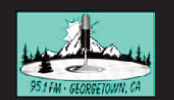
The Debt Trap Are we in it ? Update 2 28 2021

Too deep a hole to climb out!
The debt trap
Stimulus and bailouts cost money. Not that you will get an invoice, mind you. Although that argument has been put forth. Issue an invoice for government spending on an itemized bill to every working American and it is argued we would see fewer military excursions, fewer social programs and fewer bailouts.
The reasoning for government spending is either for defense, improving the greater good by whatever method, or addressing an economically stressing event like COVID-19. The term often used is the government borrows in order to spend so we “grow our way out” of an economic problem.
When the government spends money, it either borrows it, taxes it or creates it.
The Federal Reserve creates money, and then loans it to the Treasury in exchange for IOU’s.
Since the Federal Reserve is a quasi-government agency, the borrowing is more like a bookkeeping entry than an actual lender and borrower. The Treasury is supposed to pay it back to the Federal Reserve, but in actuality has been running up the tab for decades. That “tab” is called the U.S. debt, and it stands at about 23.3 trillion (look up the U.S. debt clock webpage for a sobering moment).
The debt doesn’t include what is called unfunded liabilities. Unfunded liabilities is not what we owe right now, but what we promise to pay sometime in the future. Examples of these might be pensions or bills that come due in the future but are not due yet.
The United State’s unfunded liabilities are so large a number, the estimates vary depending on whom you ask. Wikipedia pegs the official figure at 43 trillion while Forbes clocks the figure at 210 trillion.
The argument for government spending revolves around the concept of return on investment. Borrow a buck and plow it into the economy and it will generate more than a buck in return. The return might come from a factory that is built or some kind of other investment that returns more money to the economy than the original dollar borrowed, as measured by U.S. Gross Domestic Product (GDP).
Continue to borrow, however, and the risk of a debt trap materializes. The term “debt trap” was originated by the Bank for International Settlements.
As long as the return is positive, a government can continue to borrow. Simply put, if every borrowed dollar yields more than a dollar, any new borrowing will grow an economy by more than a dollar, enabling the dollar to be paid back while the residual stays in the economy. The more money borrowed, the more the economy grows. Continue to borrow and the interest to service the debt continues to grow. Much like someone endlessly running up credit cards, eventually the principal cannot be paid as the interest continues to grow as more money is borrowed.
The debt trap occurs when each dollar borrowed by a government yields less than a dollar in benefit. Instead of getting more back than what is borrowed, the return is less than what is borrowed. This is the exact opposite of what occurs when the return is positive and the economy benefits. Instead, the debt trap is when the yield goes negative and for every dollar borrowed, less than a dollar is produced in the economy and for every dollar borrowed, the economy now shrinks.
Think of it like transferring water using a bucket with a hole in it. The more you use it, the more water you lose. The same goes with a debt trap. For every dollar borrowed, the economy gets worse. While that occurs, however, the debt and its interest continues to increase. To stay afloat, the need to borrow more accelerates. As more is borrowed, more is lost.
Hence the trap. You cannot go forward and borrow more without making the situation worse, yet the debt cannot be serviced without additional borrowing.
Opinions vary as to where U.S. debt is in regard to “trap” conditions, but many argue we’re close to it now, while others claim we are well past the point of negative returns and already in the trap.
In summation, the answer from many in government about how to fix the debt problem is to “grow our way out of it.” The problem is we may have already passed the point of no return and be caught in the trap making the situation worse with each passing day.
Opinions expressed here are those of Mr. Cuniberti and may not reflect those of any media outlet. For a list of the services offered by Mr. Cuniberti, call 530-559-1214. California Insurance License #0L34249 and Medicare Agent approved. Email: news@moneymanagementradio.com.
Call me (530) 559-1214
Fire Insurance available







